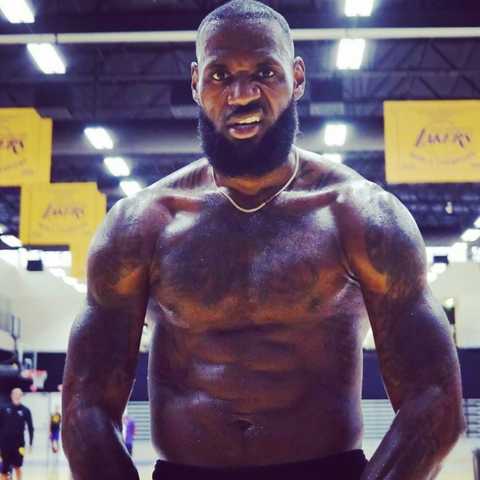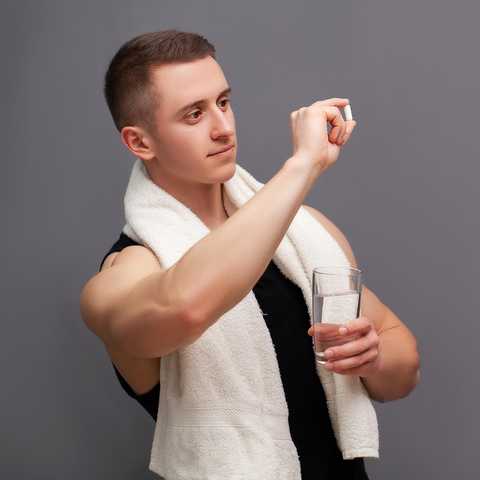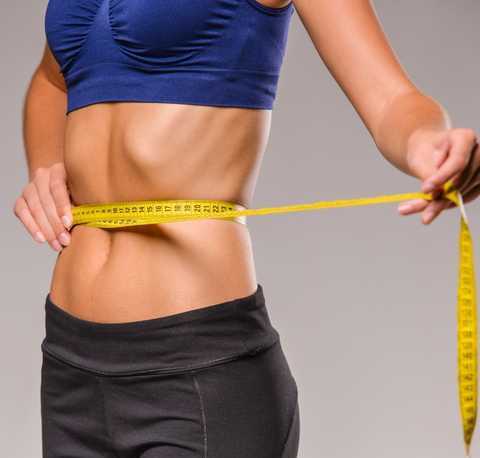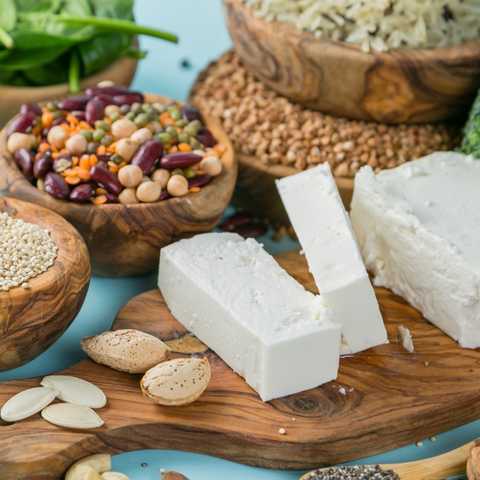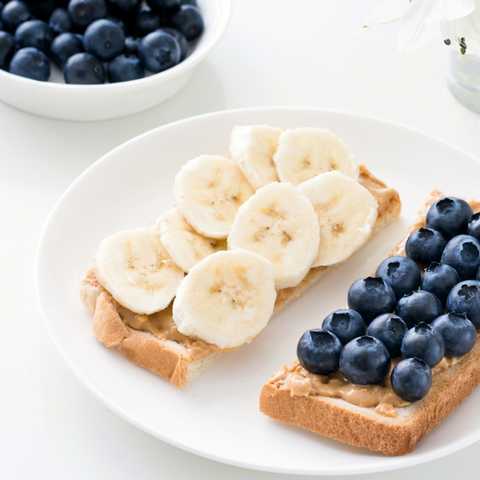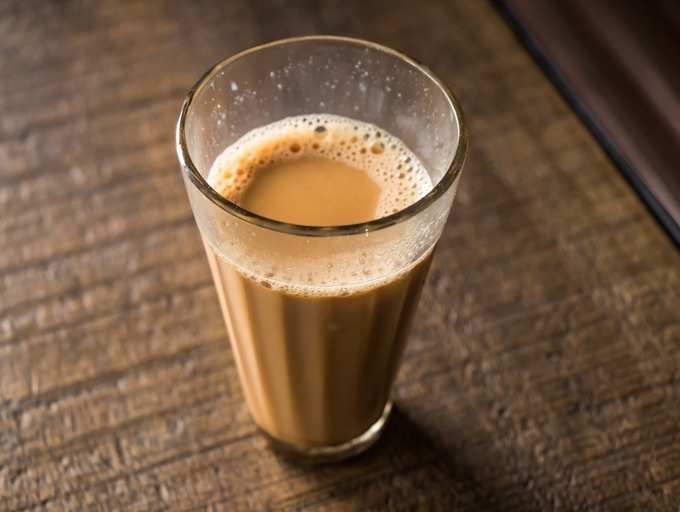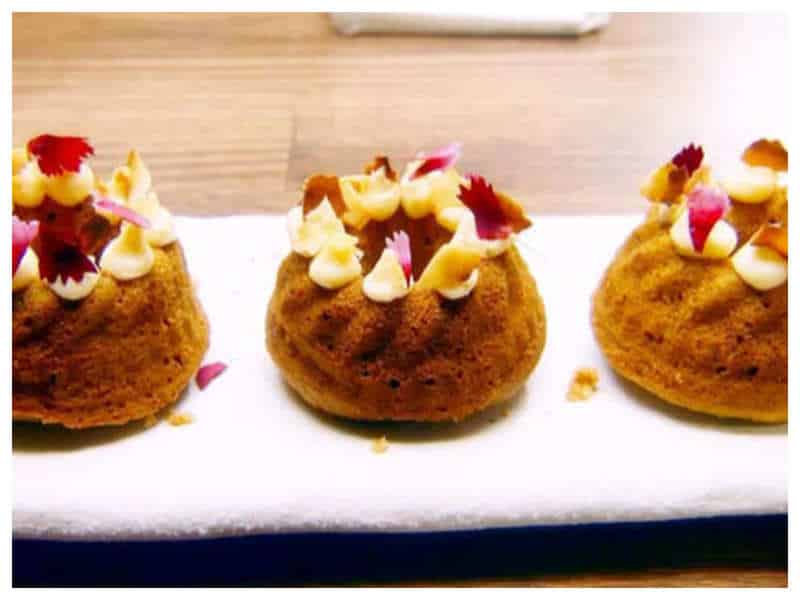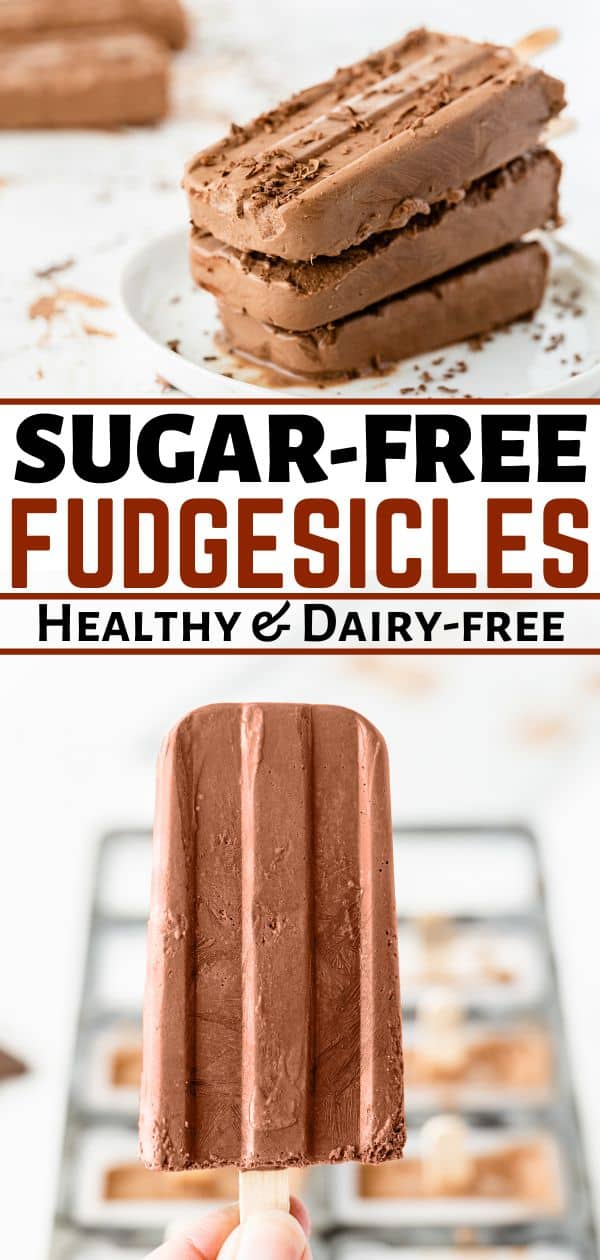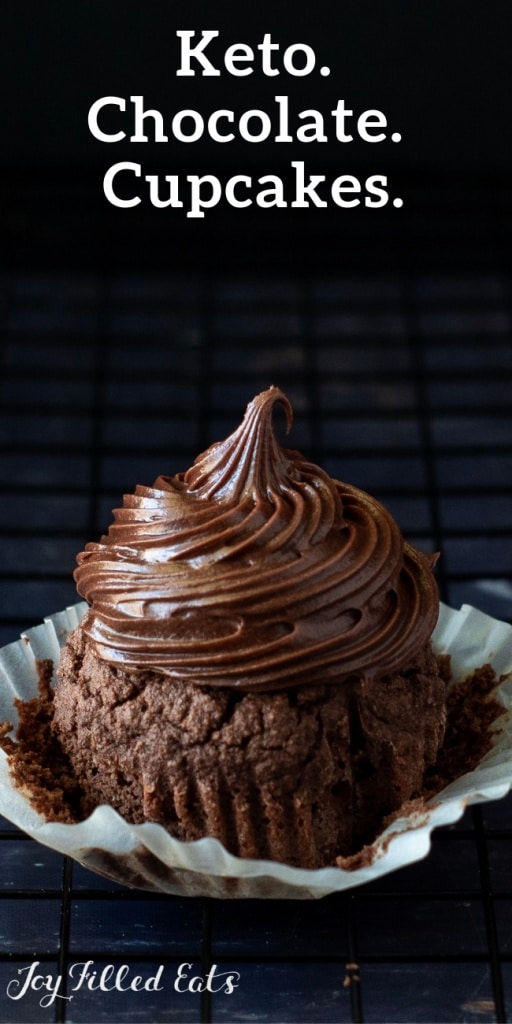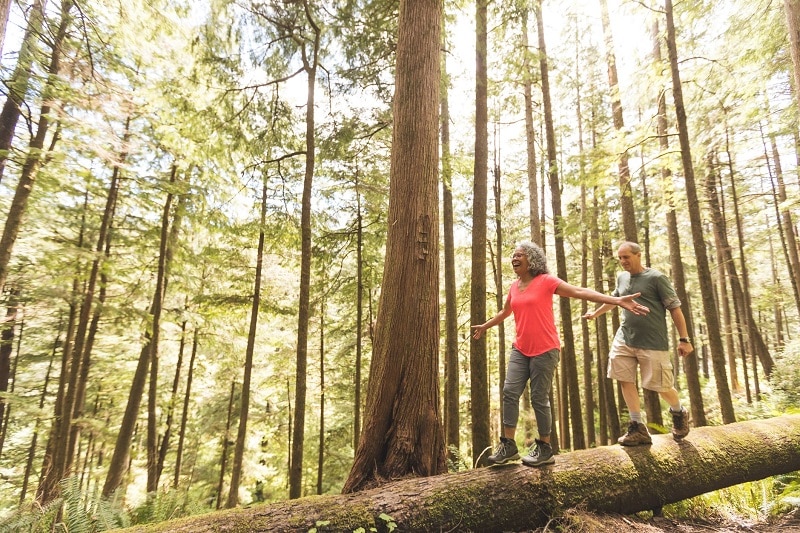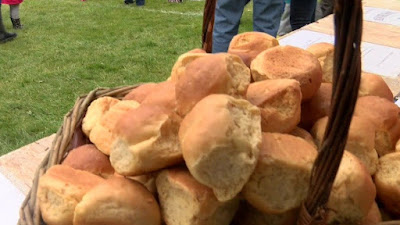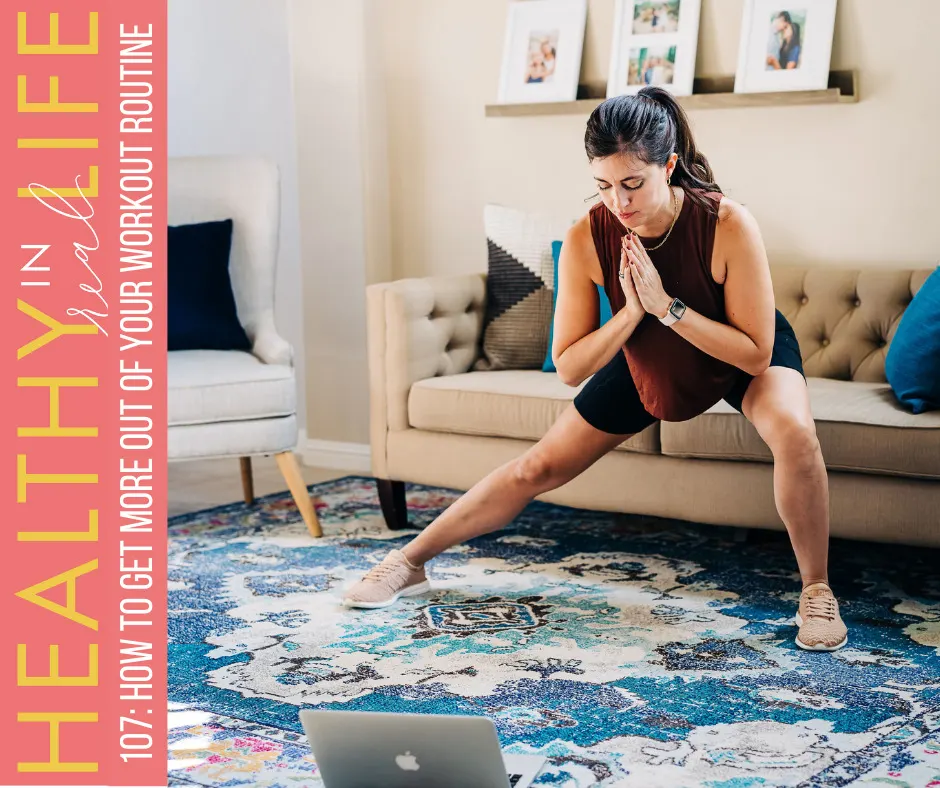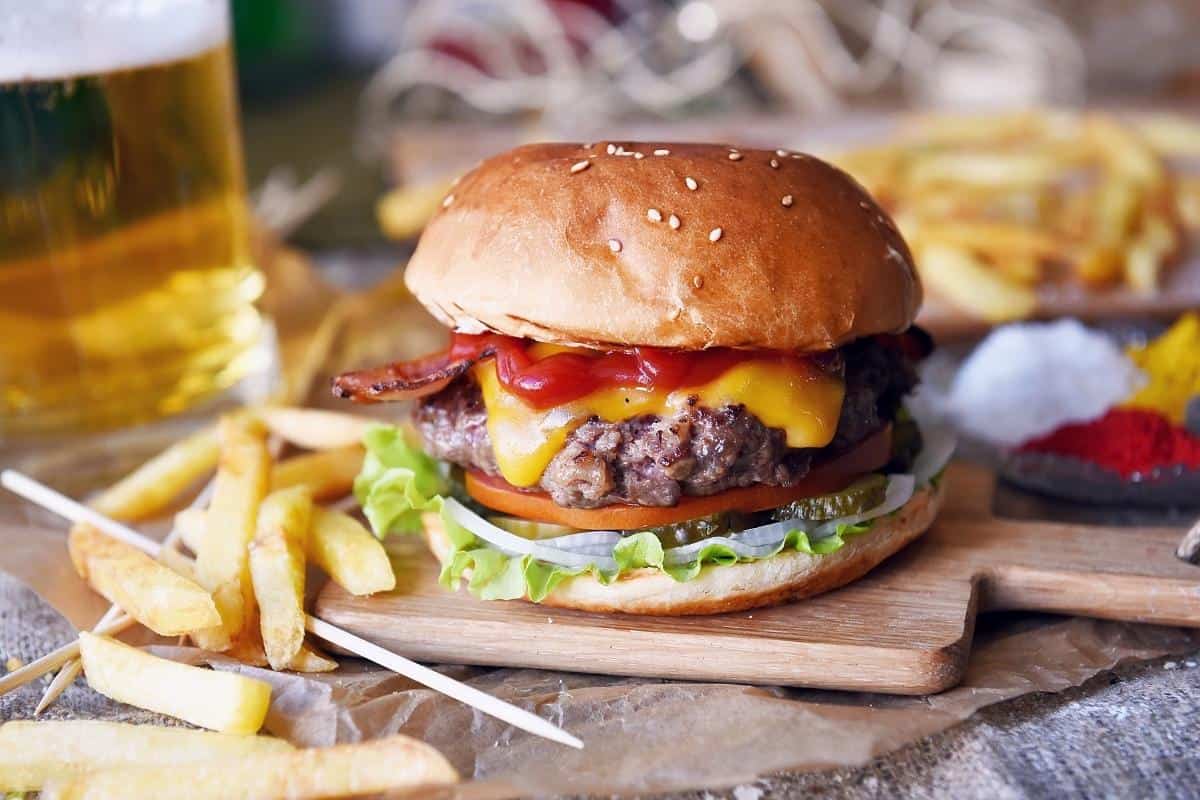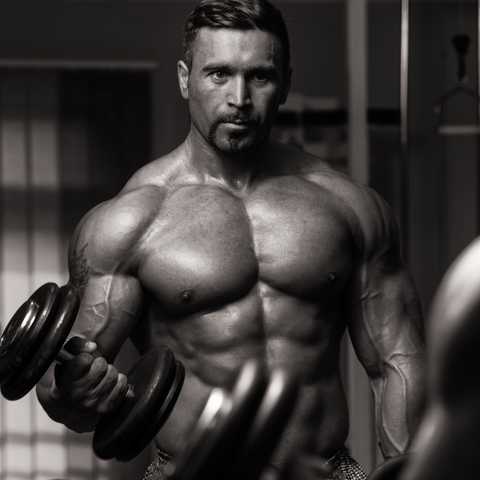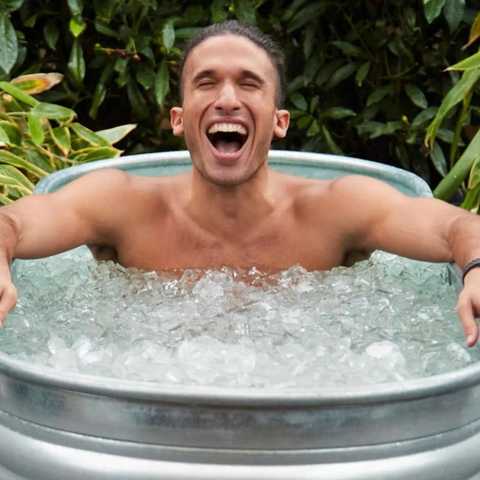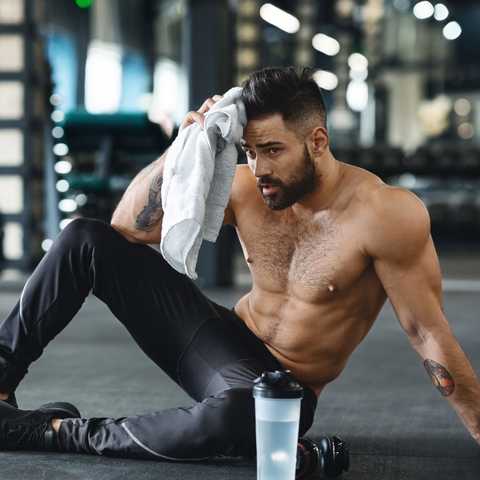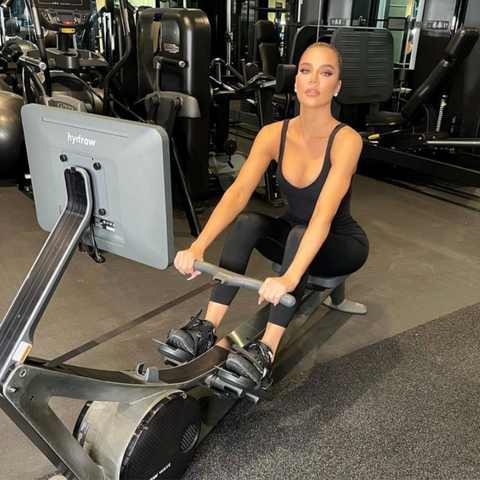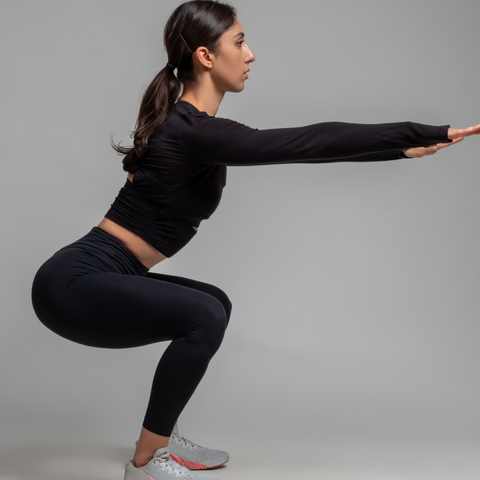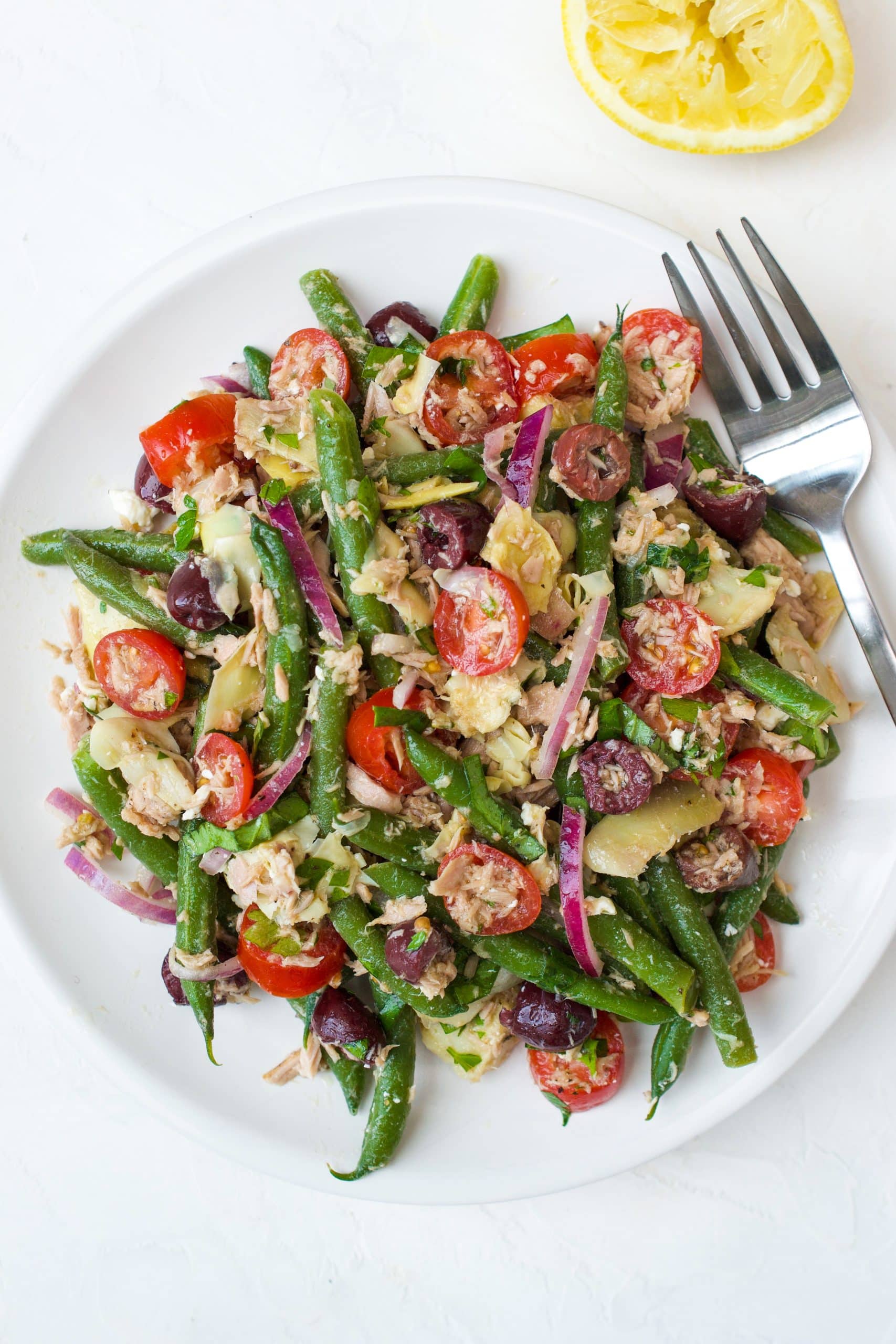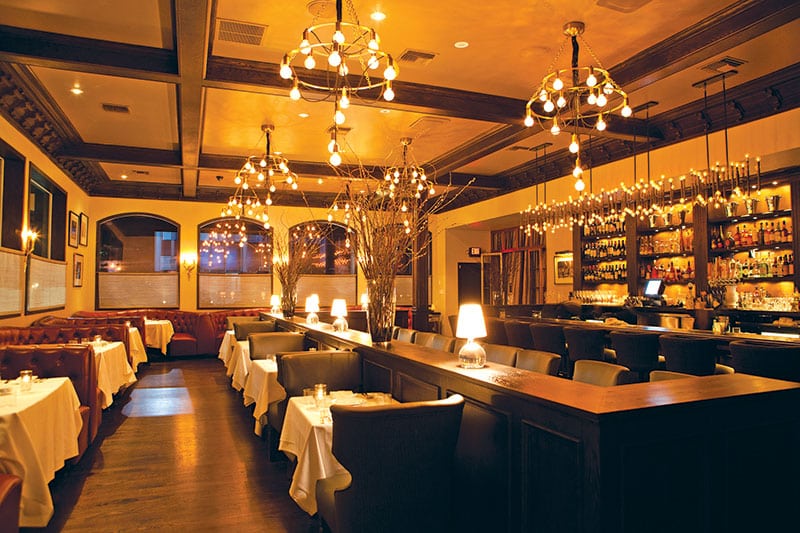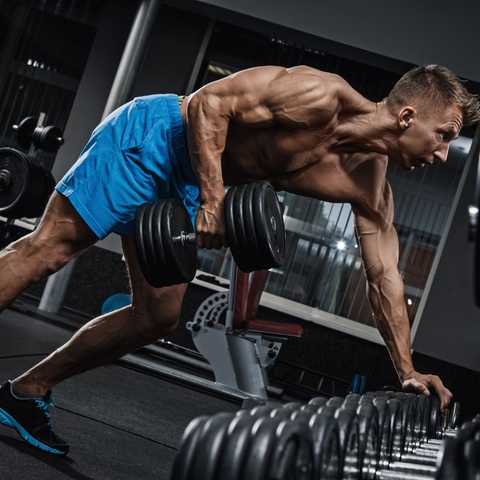Arms that fill out your sleeves are an immediate attention grabber and one of the best business cards for your hard work in the gym. Whether you are training for strength, sport, or function, bicep curls deserve a spot in your workout program.
A variation of the traditional curl that many incredible bodybuilders, including Arnold Schwarzenegger, credit for building their massive upper arms, is the incline dumbbell curl, which does a great job of growing the peak of your biceps muscles.
If you aren’t already performing the incline curl, you’re missing out on some serious gains by not hitting the bicep from this position. As the incline dumbbell curl stretches your bicep out to its fullest ability before contracting it, it adds a unique training variability that many other curl variations don’t possess.
We’re certain at this point you’re ready to grow your guns using the incline curl! But before you hit the gym and grab a set of dumbbells, make sure you read this so you can master the correct form, how to incorporate it into your program, and some great variations.
Table of Contents:
- What Are Incline Dumbbell Curls?
- Incline Dumbbell Curl Muscles Worked
- Incline Dumbbell Curls vs Traditional Curls: What’s The Difference?
- How To Perform The Incline Dumbbell Curl
- Common Incline Curl Mistakes
- Benefits Of Incline Dumbbell Curls
- Incline Dumbbell Curl Variations And Alternatives
- Programming The Incline Dumbbell Curl
- Sample Bicep & Tricep Workout
- FAQs
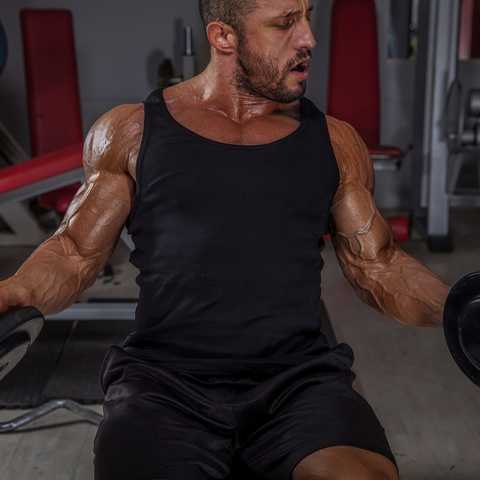
What Are Incline Dumbbell Curls?
The incline bicep curl is a curl variation performed using an incline bench. The main difference between this move and a traditional curl is that the incline dumbbell curl places your elbows behind your body as your shoulder joints are hyperextended. This allows your bicep muscle fibers to elongate and get a profound stretch at the bottom of the repetition.
The stretch and deeper range of motion your bicep experiences during this eccentric lowering portion of the lift enables your body to produce more force when you contract the muscle1.
In addition, due to the elbow position, this curl is a great exercise for the biceps long head, which is the head that contributes to the peak of the muscle, whereas exercises targeting the biceps short head contribute more to thickness.
The long head crosses your shoulder joint, which is why the stretch can feel so intense at the bottom of the rep in both your biceps and shoulders. For some people, this stretch can be too intense, so it is essential to start with light enough weights and progress from there.
What Muscles Do Incline Bicep Curls Work?
It should come as no surprise that the incline dumbbell curl targets the biceps. However, they also rely on help from the brachialis and brachioradialis. Here’s a closer look at how each of these muscles is worked.
Biceps brachii:
The biceps brachii muscle is located on the front part of your upper arm. As we mentioned earlier, it has two heads.
The short head, which is on the inside of the arm, attaches to the scapula’s coracoid process, a hook-shaped bony structure, and contributes to the thickness of the bicep. The long head makes up the outer portion of the bicep, and its tendon runs from the front of the shoulder over to the shoulder blade.
It’s important to remember that just because this exercise targets the long head, which makes up the mountain-top peak of the upper arm, doesn’t mean the short head isn’t getting some stimulus, either. The long head just gets more.
The biceps’ main jobs are bending your arm (elbow flexion) and turning your palm up (supination), and it also assists with raising your upper arm (shoulder flexion). The biceps muscles also act as synergists during any pushing exercise and assist with all pulling exercises.
Brachialis:
This muscle isn’t going to be one you see when you strike a flexing pose in the mirror, as it is located deep underneath the biceps.
However, it plays an important role in building big biceps since it pushes the muscle up from underneath. It crosses the elbow joint, and its main job is to assist with elbow flexion. Don’t neglect your brachialis exercises as they’re important for bigger, stronger arms!
Brachioradialis:
This thick muscle is located on the inside portion of your forearm (think the thumb side). This muscle is highly activated during the incline dumbbell curl. Its role in the curl is to assist with elbow flexion.
Don’t underestimate the importance of forearm muscles because if they are too weak to handle the weight, you won’t be able to stimulate the biceps during curls.
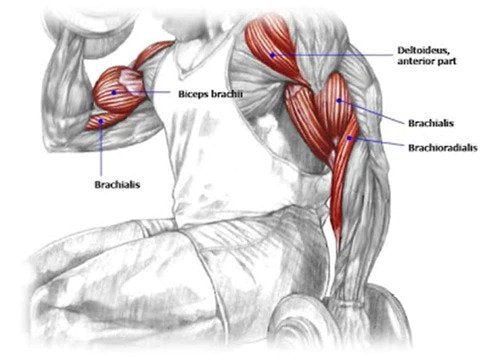
Incline Dumbbell Curls vs Traditional Curls: What’s the Difference?
The traditional biceps curl allows you to use a heavier weight due to the position of your arm, which is why it’s one of our favorite dumbbell bicep exercises. With your elbow right next to your sides, you can use a heavier load. Since the incline dumbbell curl puts your shoulders in a hyperextended position, you will not be able to use as heavy of weights.
Using momentum and not keeping your body tight will cause your shoulders and even your back muscles to assist during the movement to handle the heavier weight. This can also be a downfall of the traditional biceps curl as it raises the chance that your body will begin to cheat during the movement.
Even though incline curls cannot be done with as heavy of a weight, they are challenging for a different reason. As we mentioned, the position of your elbows behind your body puts your shoulders in a hyperextended position.
This means that you will get an extreme stretch of the biceps and shoulders during the lowering portion of this exercise due to the increased range of motion. This, combined with the fact that training the biceps in this position is often neglected, can make this movement extremely difficult.
It’s important to realize that both exercises will be hard for different reasons. Whichever you haven’t been doing in your training will likely be more challenging. Traditional curls enable you to lift heavier, and incline dumbbell curls offer a different stimulus.
How to Perform The Incline Dumbbell Curl
The bread and butter of the seated incline dumbbell curl is the setup and position of the incline bench. If you are too vertical, you’re really just performing a seated traditional dumbbell curl with your elbows right next to your body.
If you do this with your elbows too far behind you, you are likely to injure your shoulders due to the highly hyperextended position. Follow this guide to ensure you’re setting up the bench and yourself correctly.
If you’re looking for a unilateral exercise to target the biceps, simply perform these same movements, one arm at a time, to turn it into an alternating incline dumbbell curl.
How to do the Incline Dumbbell Curl:

- Set up your bench to a 45-60 degree incline angle.
- Get into the starting position by grabbing a pair of dumbbells, taking a seat on the bench with your feet grounded and your back flat on the bench. We recommend keeping the back of your head on the bench the entire time.
- Let your arms hang to your sides behind your body. Your shoulders should be in a straight line with your elbows. Keep your shoulder blades pinned against the bench.
- Make sure your palms are up and curl both weights by flexing your elbows and keeping your upper arms vertical. Grip the dumbbell as hard as possible and keep your pinky slightly above your thumb as if you were over supinating during the curl.
- Pause for a second at the top to contract the bicep as hard as you can, then slowly begin to lower your weights, keeping your upper arm locked in the same position. Keep your pinky slightly above your thumb and allow the slow negative to stretch the bicep and shoulder without losing tension.
- Once you have reached the bottom with your arms straight, repeat.
Common Mistakes to Avoid
Adding incline dumbbell curls to your biceps workout will help you hit your bicep growth goals. But, to get the most out of this exercise, it’s important to follow correct form and avoid these common mistakes.
- Arching Your Back: If your lower back tries to come up off the bench, you will lose the correct position for the exercise. Think about pulling your abs into your spine and maintaining a connection with the bench throughout the movement. If the weight you’re using is too heavy to maintain this, lighten the load.
- Going Too Heavy: Using too heavy of weights will make it more likely that your body will cheat the movement to compensate. It also makes it dangerous during the lowering part and could lead to a shoulder injury if the weight is too heavy for the stretching portion of the movement. Remember, you won’t be able to use your traditional curl weight, so start lighter, focus on control and tension, and then progress from there.
- Placing Your Arms Too Far Behind You: Make sure to set the bench up to the correct angle, so your arms are not too far behind you. Set the bench between 45-60 degrees and keep your elbows in line with your shoulders. Again, the shoulders are hyperextended in this position, so having them too far back makes it a dangerous risk with no increased benefit.
- Shortening The Range Of Motion: Not letting your arms straighten all the way at the bottom will rob your biceps of the benefits of the stretched position. Remember that this extreme stretch of the biceps and shoulders and increased range of motion allows that biceps muscle to contract with more force than usual.
- Moving Your Upper Arm: Make sure to keep your upper arm vertical and locked in position. If your arms move out of this position, your body will try to recruit your shoulders to assist in this movement, which will decrease bicep activation.
- Letting Your Weights Fall To The Bottom: When you start the lowering phase of the movement, make sure to keep tension on the biceps the entire time. Think of using a 4-second tempo on the way down. If you feel like you are controlling the curl-up and then letting the weights fall back down, you are missing out on the stretch and benefits of that slow eccentric.
Benefits of the Incline Dumbbell Curl
On the fence about including incline dumbbell curls in your workout split? These 4 benefits are guaranteed to have you incline curling in no time!
1. Builds Bigger biceps:
That’s the whole point of all bicep curls, right? The incline dumbbell curl will help grow the peak of your biceps, which means it will form more of a mountain top than a small hill.
This will help you fill out those sleeves and round out your physique if aesthetics are your primary goal. After all, who doesn’t want big biceps?
2. Provides a more extensive range of motion and stretch:
Due to the position of the biceps during this movement, the extreme stretch allows you to produce more force from the bottom of the rep.
Not only does this help build the biceps, but it also stretches them as well as the shoulders. And while you’re in the stretching mindset, consider adding a few biceps stretches to your pre or post-workout routine as well!
3. Supports Stronger shoulder positioning:
Building big biceps is incredible, but they contribute to more than that when it comes to other lifts. Think of the hyperextended position of the shoulders during the incline curl. This position is similar to movements like a close grip bench press, barbell row, dips, and even getting into position for a barbell back squat.
Strengthening your shoulders in this position allows your body to better handle the loads and position requirements of these other movements, leading to strength gains.
4. Increases tendon durability:
We know we sound like a broken record, but your position during this curl does wonders for your body.
Since the load is positioned through a stretch across the shoulders while hyperextended, this curl directly strengthens the biceps tendon associated with the long head2. This increases tendon thickness over time and helps bulletproof your shoulders.
3 Incline Dumbbell Curl Variations
Looking for more great takes on the traditional dumbbell incline curl? These 3 moves may be just what you need!
1. Hammer incline curl:
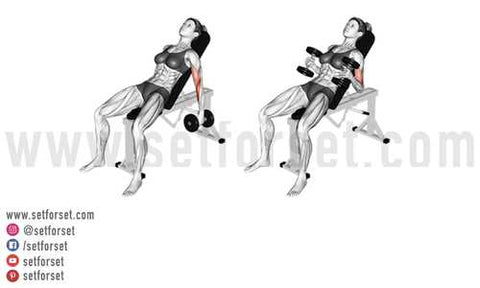
The incline dumbbell hammer curl involves the same setup with a tiny tweak to the exercise. Instead of having your palms supinated and facing up, you will have them in a neutral position with palms facing each other.
How to do the Hammer Incline Curl:
- Set up your bench to a 45-60 degree angle and sit down with your dumbbells
- Let your arms hang at your sides with elbows in line with your shoulders, and turn your palms so they are facing each other
- Slowly curl the weight, keeping your upper arm vertical. Pause at the top before lowering back down without turning your hands.
2. Flexor incline dumbbell curl:
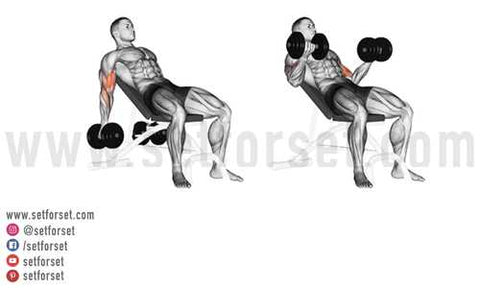
This variation combines the traditional incline dumbbell curl and the hammer curl. The difference is that you start with a neutral grip, and as you curl, you rotate your palms to face up.
This has a huge upside for improving grip strength while blasting the biceps.
How to do the Flexor Incline Dumbbell Curl:
- Set up the incline dumbbell curl angle so your bench is at 45-60 degrees and sit down with your dumbbells.
- Let your arms hang at your sides with elbows in line with your shoulders, and your palms facing your body in a neutral grip.
- Slowly curl the weight keeping your upper arm vertical, and as you curl, begin to rotate your hands so you’re now gripping the dumbbells with an underhand grip.
- Finish at the top of the curl with palms facing upward, pausing for a second before lowering back down and slowly turning your palms back to a neutral grip.
3. Cable incline curls:
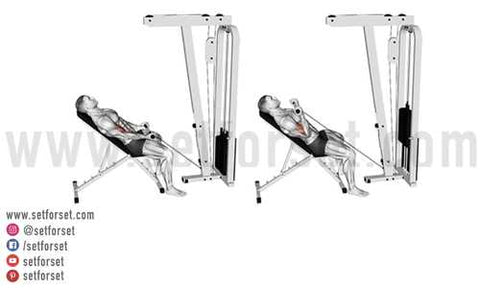
This exercise follows the same movements as the traditional incline dumbbell curl, except you will use cables to increase the tension.
The cable curl in the incline position allows the biceps to be loaded in the lengthened position, helping to stretch out the muscles while building strength.
Try to use two separate cable handles, rather than a straight bar, to perform this exercise, as it enables you to get a longer stretch during the downward portion. If you only have access to a straight bar, that will work too.
How to do Cable Incline Curls:
- Set the incline bench between two cables at the lowest setting with a handle attached to each, or attach a straight bar, placing your bench in front of it so you’re facing the machine.
- Sit on the bench, facing toward the cable machine, and grab each cable with your arms at your sides and elbows behind your body.
- Slowly curl the cables without moving your upper arm and pause at the top before lowering down.
3 Incline Dumbbell Curl Alternatives
Here are 3 great incline dumbbell curl alternatives that also target the upper arms and will help you build your biceps peaks.
1. Preacher curls:
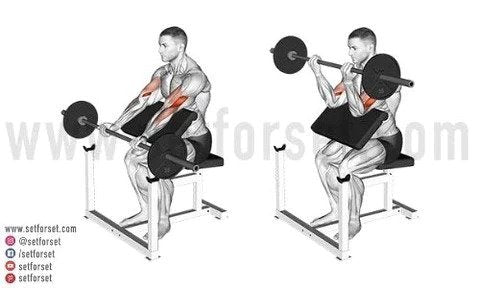
The preacher curl isn’t going to have the same position as the incline dumbbell curl, but it is an effective variation to isolate the biceps, especially the long head. Typically, to perform this move, you will sit down at a bench tilted inward that enables your upper arms to rest on it.
Instead of the elbows being behind your body, you will place them in front of your body while they’re supported by a bench. Use a neutral or reverse grip to target the long head.
2. Drag curls:
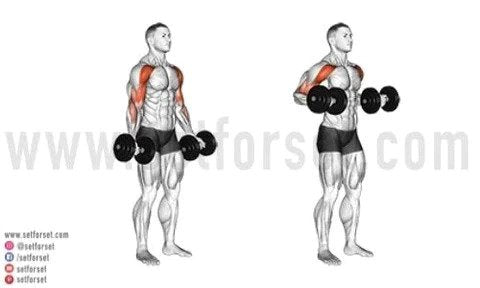
This variation requires control, making it a little more challenging than the incline curl. It does a great job of getting your elbows behind your body to produce a similar stimulus for the peak of the bicep, but it has less stretch reflex since the elbows return to your sides instead of lengthening behind you.
Stand and perform a supinated biceps curl as you pull your elbows behind your body as if dragging the weights up along your shirt.
3. Spider curls:
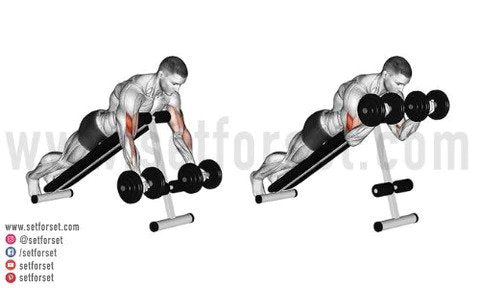
The spider curl is done using an incline bench, but instead of sitting on the bench, you will lean your chest into the bench, so your arms are in front of your body.
Let your arms hang down in front of you while your body is supported by the bench, and curl the weights forward while keeping your upper arm still, just like the incline curl.
This will target more of the short head, but it will still give you a great stretch due to the position of your arms.
Programming the Incline Dumbbell Curl
Due to our recommendation that you use lighter weights for the dumbbell incline bicep curl, sticking to muscle hypertrophy or muscle endurance is best. Here’s some guidance on how to best program this move.
- For muscle hypertrophy, try 3 sets of 12-15 reps, focusing on a 3-second negative. Another option would be 3 sets of 8-10 reps but increase the lowering portion to 5 seconds with a slightly lighter weight.
- For muscle endurance and tendon strengthening, try 3 sets of 15-20 reps while still using a controlled tempo and a lighter weight.
Sample Arm Workout That Includes The Incline Curl
Curious how to include the incline dumbbell curl in a workout routine? Here’s a look at how to add it to a biceps & triceps workout!
|
Exercise |
Sets |
Reps |
|
Kettlebell Skull Crushers |
2 |
12 |
|
Tricep Rope Cable Push Downs |
2 |
15 |
|
Bench Dips |
2 |
20 |
|
Overhead Dumbbell Extensions |
2 |
10 |
|
Incline Dumbbell Curl |
3 |
10 |
|
Alternating Standing DB Curl |
2 |
8 |
|
EZ Bar Preacher Curl |
2 |
12 |
FAQs
We’ll answer some frequently asked questions about the incline dumbbell curl here.
What angle is best for incline dumbbell curls?
Set the bench up between a 45-60 degree angle, depending on your height.
Are incline bicep curls better than bicep curls?
Incline bicep curls are better for activation of the long head of the biceps.
Are incline bench curls good for building muscle?
They are great for building muscle and increasing the peak of your biceps.
Can You Perform Incline Dumbbell Curls Without a Bench?
The incline bench is much more convenient, but you can perform incline dumbbell curls without it. If you have a stability ball, chair, ledge, or something similar, you can get your body in the same position. Holding a difficult position may require more balance and core activation, but any option that enables you to get your arms behind you will work for performing this curl.
Looking for more great exercises to build your biceps? Check out these 12 Best Dumbbell Biceps Exercises! Or, for tips and strategies on how to see some serious upper arm growth, take a look at our Ultimate Guide to Building Big Biceps.
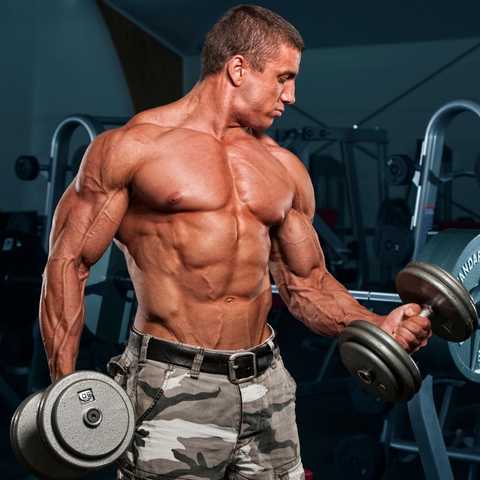
- Oliveira LF, Matta TT, Alves DS, Garcia MAC, Vieira TMM. Effect of the shoulder position on the biceps brachii EMG in different dumbbell curls. Journal of Sports Science & Medicine. https://pubmed.ncbi.nlm.nih.gov/24150552/
- WIESINGER HP, KÖSTERS A, MÜLLER E, SEYNNES OR. Effects of Increased Loading on In Vivo Tendon Properties. Medicine & Science in Sports & Exercise. doi:10.1249/mss.0000000000000603

